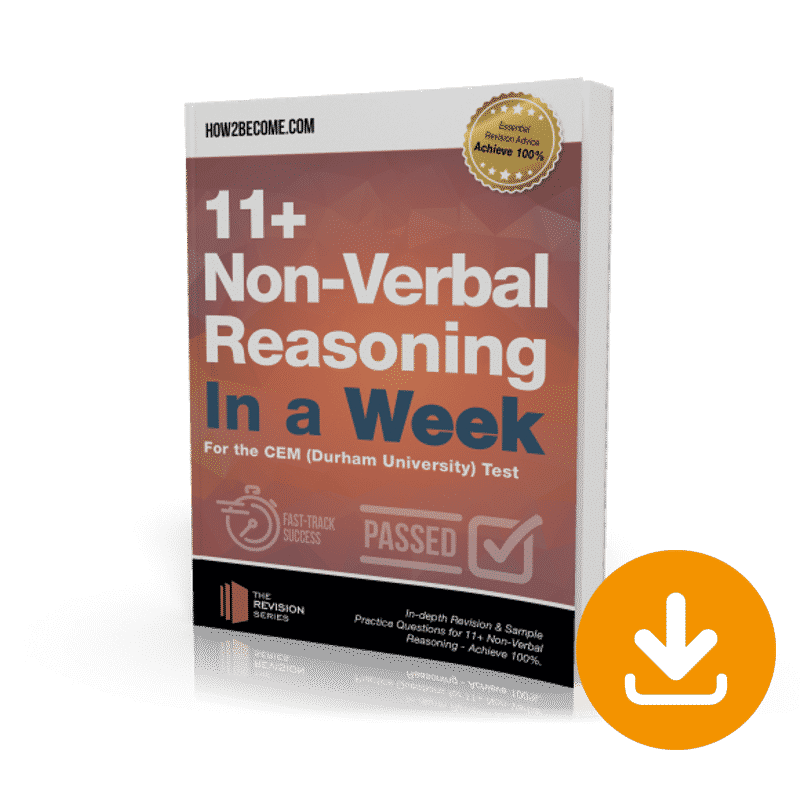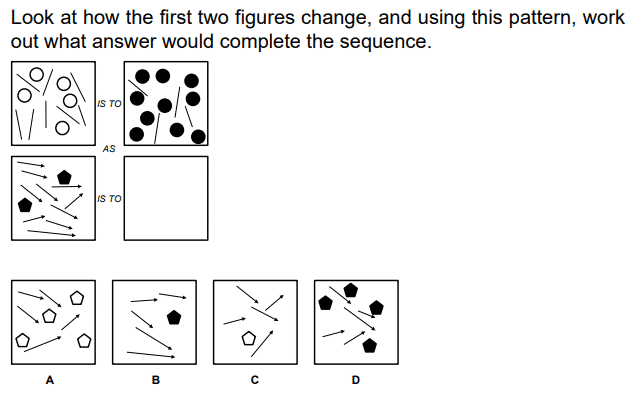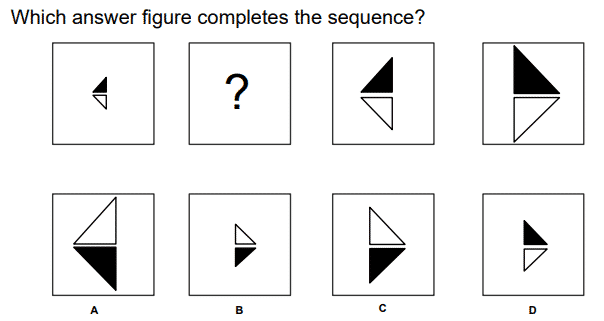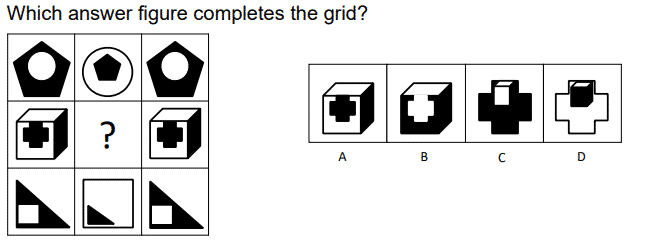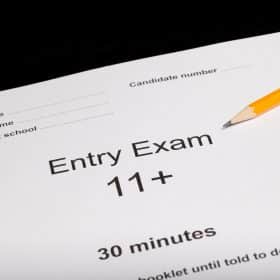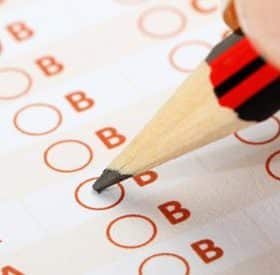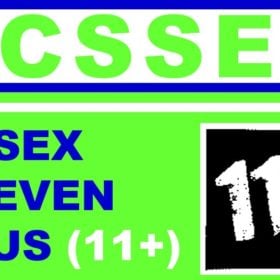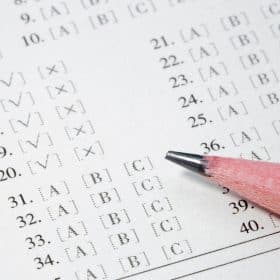HOW TO PASS THE CEM 11+ TEST: NON-VERBAL REASONING
Introduced fairly recently, the CEM 11+ is a type of 11+ assessment used across the UK. The CEM 11+ assesses the ability of Year 6 pupils who are looking to enrol in grammar schools. For this reason, it’s vital that you help to prepare your child as much as possible, since passing the tests will allow them to attend a grammar school. This guide contains everything you need to pass the Non-Verbal Reasoning section of the CEM 11+ test, including tips, explanations, sample questions, and mock tests. Putting these resources to use will help your child to prepare thoroughly for CEM 11+ Non-Verbal Reasoning, and ace their exam.
EVERYTHING YOU NEED TO IMPROVE YOUR CEM 11+ NON-VERBAL REASONING TEST SKILLS
The CEM 11+ Non-Verbal Reasoning Test is one of the three assessments in the overall CEM 11+ (with the other two being Maths and Verbal Reasoning). Non-verbal reasoning tests are used to measure a pupil’s ability to recognise shapes, patterns, and the relationship between the two. In the process of doing this, pupils are also demonstrating their logical and technical skills in visualising and interpreting shapes.
Unlike Maths and English, which children are taught at primary school, Non-verbal reasoning might be a completely new concept for your child. Since it isn’t a formal subject, it’s quite possible that your child has had little practice in non-verbal reasoning. For this reason, it is paramount that you equip your child with the right toolkit so that they can improve their non-verbal reasoning skills.
This revision guide is ideal for pupils who wish to secure high grades on the Non-Verbal Reasoning part of the CEM 11+ Test.
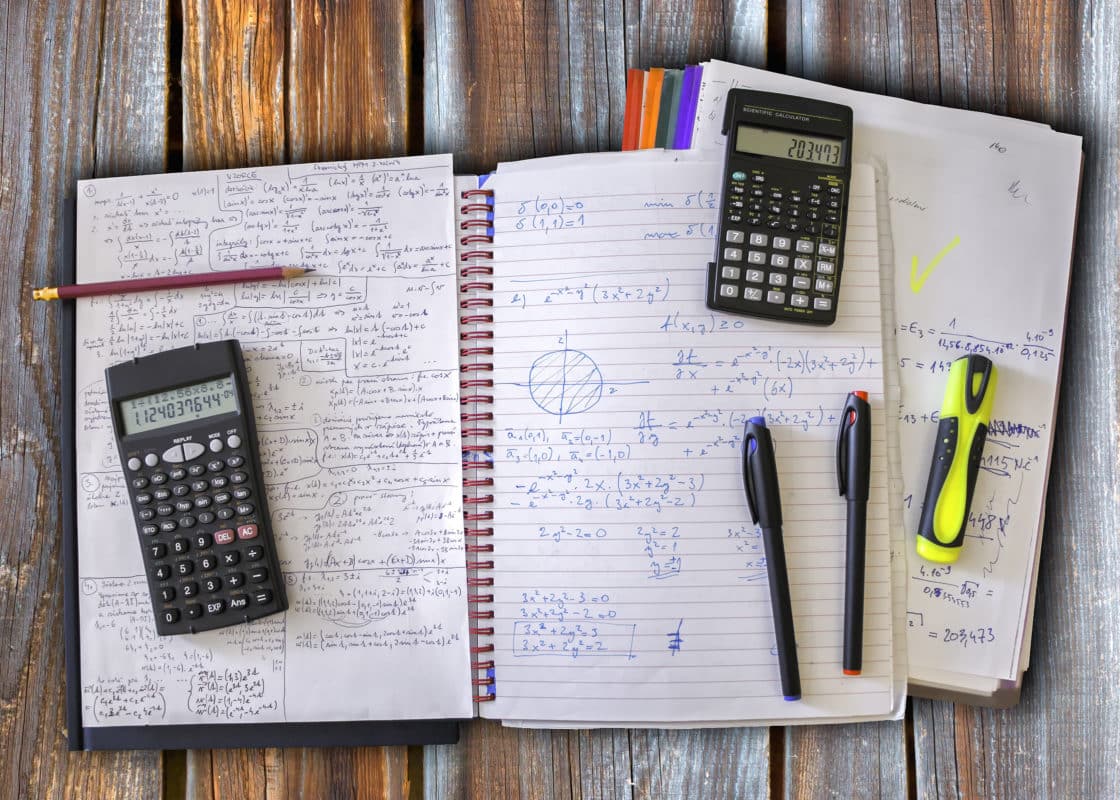
THE CEM 11+ TEST
In the final year of primary school (Year 6), pupils might choose to take the 11+ assessment. Passing the 11+ is required for students to attend grammar school, and so it’s important that your child prepares effectively if they do wish to attend grammar school.
The CEM 11+ is used in a number of counties throughout England, and has been designed to be ‘un-tutorable’. While it may be difficult to tutor your child through the CEM 11+, it’s entirely possible to learn the kinds of questions that appear in the CEM 11+, so that you aren’t caught off-guard by what you’re faced with on the day.
The CEM 11+ is an incredibly important test for many children, since it can be the difference between attending their secondary school of choice and ending up at their second choice of school. For this reason, we believe that it is vital for children sitting the CEM 11+ to be as prepared as possible.
CEM 11+ NON-VERBAL REASONING TEST GUIDE
Learn how to pass the CEM 11+ Test (Non-Verbal Reasoning) with our guide that is packed full of practice questions for your child to work through.
Whilst this guide won’t contain exactly the same questions as you’ll see in the exam, what this guide does offer is question styles that mirror what your child can expect to take in the exam. Therefore, your child will be able to improve on the essential skills needed in order to pass the CEM 11+ Non-Verbal Reasoning Test.
NON-VERBAL REASONING TESTS REQUIRE CREATIVITY AND PERCEPTION
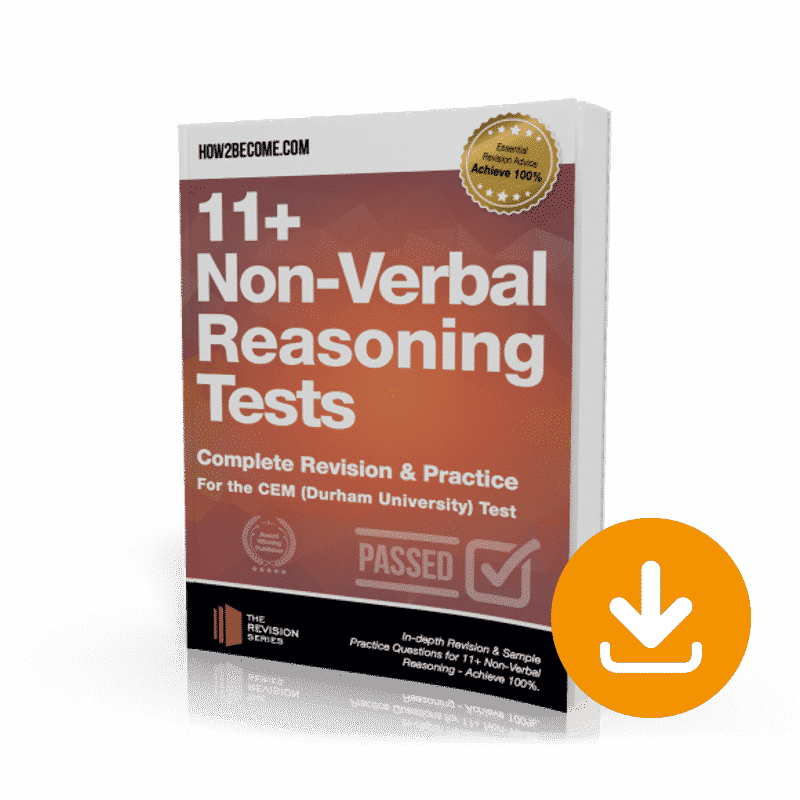
SAMPLE PRACTICE QUESTIONS – CEM 11+ NON-VERBAL REASONING TEST
ANSWERS TO SAMPLE QUESTIONS – CEM 11+ NON-VERBAL REASONING ASSESSMENT
Q1. B
EXPLANATION = Figure B is the odd one out because the other figures contain only three lines, whereas Figure B contains four lines.
Q2. B
EXPLANATION = Answer option B is most like the two other figures. The two figures show a large shape. The number of lines inside the shape is one less than the sides of the large shape.
Q3. A
EXPLANATION = Within the first set of squares the circles double in number from 5 to 10 and change from white to black. The number of straight lines halves from 8 to 4.
Q4. D
EXPLANATION = The sequence is as follows: every even square has triangles pointing in the right direction, every odd square has triangles pointing in the left direction. The sequence progresses with the triangles getting bigger each time.
Q5. C
EXPLANATION = In the top and bottom rows, the larger shape and smaller shape swap so that the smaller shape becomes large and the larger shape becomes small.
The shape that was inside the other shape now has the other shape inside of it. The shading also changes on the shapes in the middle of the grid. For these reasons, the correct answer would be c).
CEM 11+ NON-VERBAL REASONING TESTS – FREE BONUS
When you order you will receive the following free bonus:

Plus 30-days FREE ACCESS to the 11+ online testing suite. Thereafter, just £5.95 +vat per month. No minimum term. You may cancel anytime. Cancel before the 30-days are up and you will not be charged.

✓ 30-Day Money-back Guarantee
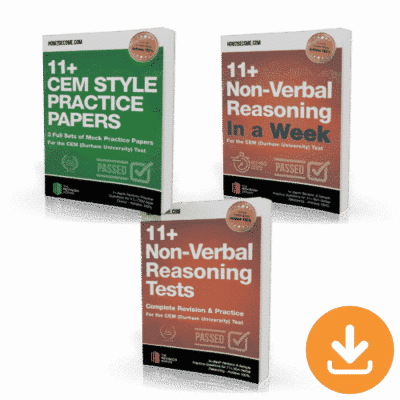
✓ 30-Day Money-back Guarantee
Did you know? All orders with How2Become are protected by our 30-day money-back guarantee. What ever the reason…or no reason at all…you can have your money back if this resource isn’t right for you (see our terms for full details).

